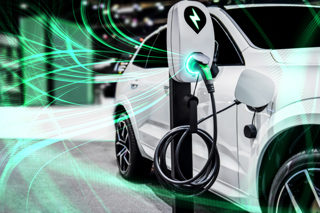The automotive industry is at a pivotal point as it tries to understand and envision the role of dealerships, digital and the retail model of the future.
With customers’ expectations ever-increasing and new technology making more and more possible every day, there’s unprecedented complexity for manufacturers and network operators as they try to decide where to best focus finite budgets and resources.
Ben Stanley, global automotive research lead at the IBM Institute for Business Value stated that “OEMs have to cover a huge number of bases... they have to be selective. It’s a strategically expensive time to be an auto OEM.”
With so many significant trends and innovations impacting the industry, knowing where to place your chips has never been less certain.
The shift from ownership to usership, connected cars, autonomous vehicles, alternative retail formats, partnership ecosystems, service innovation, artificial intelligence and machine learning are all set to increasingly disrupt familiar ways of working and traditional channels to market.
As Mary Barra, General Motors’ chief executive, said: “The Automotive industry is poised for more change in the next five to 10 years than it’s seen in the past 50.”
The ‘holy grail’
Through initiatives such as direct internet sales, advanced configurators, shopping centre stores, OEM-backed car-sharing and multi-modal representation, manufacturers and dealers have invested millions in trying to keep their retail presence fresh and enticing in the digital era.
This has however so far manifested itself more as a trial and test approach over wholescale change, as the industry tries to figure out the right balance in service delivery through physical facilities and what to transition to online and self-serve.
Recent studies all point towards that balance being the elusive ‘holy grail’.
Whilst we all accept that digital tools can save time, effort and money, customers feel companies have used digital to commoditise services, not personalise them, and that human interaction remains a vital part of the overall experience, especially for specific missions such as; getting quick answers, service recovery and getting expert advice.
In Engine’s annual Customer Experience Report, the study revealed that although 62% of respondents wanted simpler, flexible and more affordable customer service options (which digital solutions can support), they were far less interested in companies prioritising investment in voice assistants (15%), using data to make recommendations based on preferences (17%) or automating elements of the customer experience (22%).
Indeed, 58% would favour focusing on training and performance incentives for customer-facing staff.
The out-take is that today’s businesses need to be set up to provide more personal, intuitive and responsive services that dynamically respond to customers’ needs.
Technology, used as a means to do this, sits at the heart of almost every service we use day-to-day, yet technology alone does not make a great service.
Customers still want human contact and physical experiences to fulfil certain goals, and that’s true for the automotive sector too.
Bricks and clicks
According to Auto Traders 2017 Market Tracker Study, 76% of buyers surveyed use the internet to research their purchase and 67% go on to visit a dealership in person.
The study also revealed that 88% of consumers won’t purchase without test driving but they seek more convenient, less pressured ways of doing so and that, at the point of decision, one in five car buyers are still worried about encountering unexpected costs, jargon or being confronted by too many deals.
So how can the industry imagine and create more seamless transitions between digital and physical channels: from research through to shortlisting, more convenient test drive experiences and more intuitive decision-making pathways.
Perhaps manufacturers need to look to disruptors and other sectors for answers and inspiration.
On the research front, we see the likes of online comparison innovator carwow consolidating the best offers and making introductions to local and national dealers.
In consumer goods, review site TestFreaks compiles customer and expert product reviews and features a question and answer facility, which lets prospective customers post questions and receive answers directly from customer service teams.
Regarding test drives, in sector, we see Volkswagen now actively promoting their association with app-enabled ZipCar allowing dealer-free, super-local product access by the minute.
Out of sector, Amazon Prime Wardrobe allows customers to select up to eight items online to try on at home and return for free, and the Ikea Place App lets you virtually see how over 2,000 furniture items would look (and fit) in your home before you commit.
And in relation to decision making, the US-based Fair.com app assesses personal finances to present used car buyers with options based on affordability.
Elsewhere, Lemonade Insurance has simplified a normally complex process with an effortless 90-second set up, three-minute claims and jargon-free policies and Nike+ integrates training clubs, an App and in-store specialists to help understand personal needs, find the right products and improve personal performance.
Stitching it together
So, both in and out of the industry, innovators and disrupters are demonstrating new ways to stitch together more joined-up online, human and physical services and experiences in response to emerging trends and preferences, but also in response to customer frustrations with the established automotive norm.
There’s a lot going on in the car industry right now and it seems time that the perpetual advances in product technology are matched by equally ambitious innovations in service delivery.
Author: Paddy Whiteway, client services director at Engine – The Service Design Consultancy.

















Login to comment
Comments
No comments have been made yet.